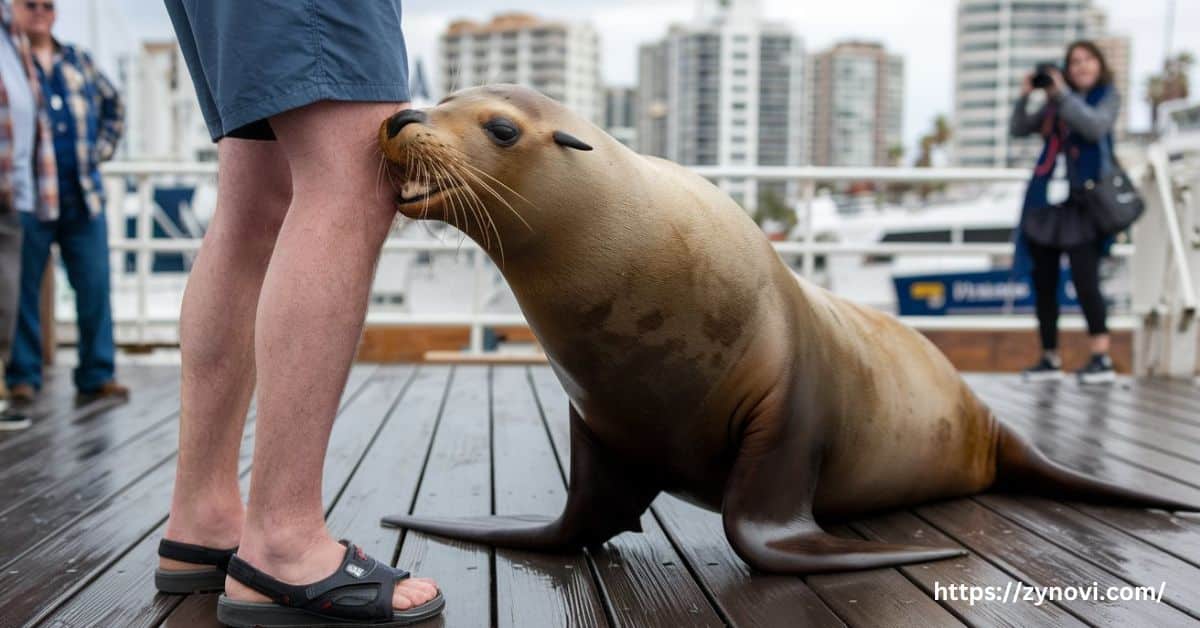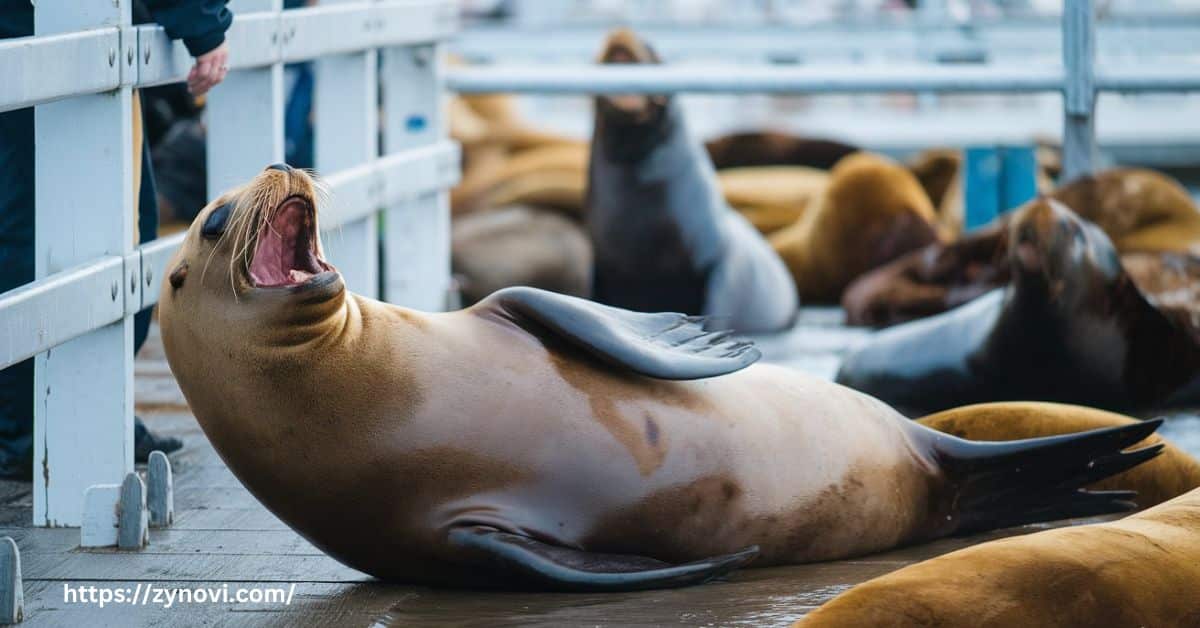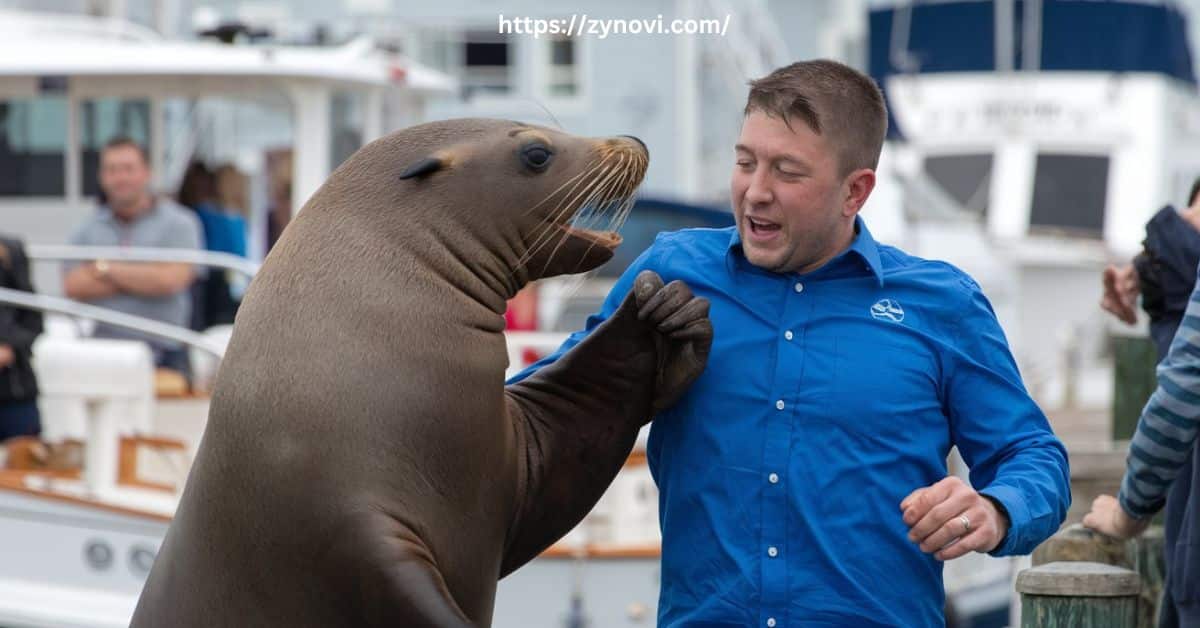Do Sea Lions Attack Humans? These are often seen as playful and curious, there’s a darker side to their behavior that can be concerning.
It’s a question that might cross your mind when you spot one of these massive, graceful creatures lounging on the beach. But don’t panic just yet understanding why sea lions may act aggressively can help you stay safe.
Whether you’re a tourist, a diver, or just someone fascinated by wildlife, knowing how to respect their space is key. Keep reading to discover what triggers aggression and how you can peacefully coexist with these magnificent marine mammals.
Understanding Sea Lions
What Are Sea Lions?
Sea lions belong to the family Otariidae, which includes seals with external ear flaps and the ability to walk on land using their flippers. Below is a table summarizing common species and their characteristics:
| Species | Scientific Name | Habitat | Diet |
|---|---|---|---|
| California sea lions | Zalophus californianus | Pacific coast of North America | Fish (sardines, herring, mackerel), cephalopods (squid, octopus) |
| Steller sea lions | Eumetopias jubatus | Northern Pacific | Fish, cephalopods |
| New Zealand sea lions | Phocarctos hookeri | Subantarctic islands of New Zealand | Fish, squid |
| South American sea lions | Otaria flavescens | Coasts of South America | Fish, crustaceans, cephalopods |
| Australian sea lions | Neophoca cinerea | Southern and western coasts of Australia | Fish, small sharks, squid |
| Galápagos sea lions | Zalophus wollebaeki | Galápagos Islands | Fish, small crustaceans |
They thrive in coastal habitats, feeding on fish like sardines, herring, and mackerel, as well as cephalopods like squid and octopus.
Behavior and Social Structure
Sea lions are highly social animals, often forming large groups called rookeries during the breeding season (late spring to early summer).
Male sea lions, or “bulls,” become territorial at this time, defending harems of females through displays like charging, biting, and vocalizing.
Communication is vital, with vocalizations such as barks, growls, and roars helping establish dominance and warn rivals.
Body language, like flipper movements and posturing, further reinforces social hierarchies. Outside the breeding season, these territorial behaviors subside, and non-dominant males and juveniles often gather in separate groups.
This seasonal adaptability highlights the complexity of their social structure and interactions.
Why Do Sea Lions Attack Humans?

Do Sea Lions Attack Humans? Though sea lion attacks on humans are rare, certain circumstances can provoke aggression. Understanding these triggers is essential for safe human-wildlife interaction.
Misunderstanding of Human Intentions
- Sea lions often misinterpret human actions, such as approaching too closely, as potential threats. This can trigger defensive or aggressive behaviors, especially during sensitive times like the breeding season.
- Marine mammal safety guidelines emphasize the importance of maintaining a safe distance of at least 50 yards to avoid provoking these animals. Getting too close can disrupt their natural behaviors, causing stress or leading to unintended confrontations.
- Respecting these boundaries ensures both human safety and the well-being of sea lions in their natural habitat.
Territorial Instincts
Male sea lions display intense territorial behavior during the breeding season, as they strive to protect their harems and mating opportunities. This behavior is especially pronounced in dominant males, often called “bulls,” who guard specific areas and fend off rivals or perceived threats.
Intruding on their space during this period can provoke defensive actions, such as lunging, barking, or biting, aimed at maintaining control over their territory. Understanding these instincts is essential to ensuring safety and respecting their natural behaviors in the wild.
Stress from Human Proximity
- Human Proximity Stress: Sea lions experience stress due to constant human presence, including tourists and boats.
- Aggressive Behavior: This stress can lead to aggression, especially when sea lions feel threatened or cornered.
- Popular Locations: Areas like Steveston Fisherman’s Wharf in British Columbia are hotspots where human activity is frequent.
- Disruptive Interactions: The constant disturbance from people and boats can interfere with sea lions’ natural behaviors, making them more prone to aggression.
- Conservation Concerns: These stressors can negatively impact sea lion health, behavior, and overall well-being.
Injuries or Illness
- Health-Related Aggression: Sea lions suffering from health issues, like domoic acid poisoning, may exhibit erratic behavior, including aggression.
- Domoic Acid Poisoning: This condition is caused by harmful algal blooms that release toxins, which can impair the neurological systems of marine animals.
- Erratic Behavior: Poisoning can lead to disorientation, confusion, and unpredictable actions, potentially making sea lions more prone to attacking.
- Prevalence Along the Pacific Coast: Domoic acid poisoning is particularly common along the Pacific coast, where algal blooms frequently occur.
- Implications for Human Safety: Humans interacting with affected sea lions may be at risk due to their altered behavior.
Food-Related Aggression
Feeding sea lions disrupts their natural behavior and encourages them to associate humans with food. When sea lions begin to expect snacks from people, they may become more aggressive in their attempts to obtain food.
This behavior is commonly observed in areas like San Diego’s La Jolla Cove, where tourists frequently feed the animals. Over time, this can lead to sea lions relying more on humans for food, which disrupts their natural hunting skills and increases the risk of aggressive interactions.
Such behavior can pose safety concerns, as humans may be at risk of bites or injuries.
Incidents of Sea Lion Interactions with Humans

Do Sea Lions Attack Humans? Here are some incidents about sea lions interaction with humans.
2017: The Girl Pulled into the Water at the Pier
At Steveston Fisherman’s Wharf, a California sea lion grabbed a young girl’s dress and pulled her into the water. The widely viewed video emphasized the risks of feeding sea lions and ignoring safety guidelines.
2007: Surfer Attacked in Western Australia
A surfer was bitten by a Steller sea lion while paddling near a rookery. Experts believe the animal’s territorial instincts played a significant role in the attack.
2023: Paddleboarder Encounter in California
In the San Francisco Bay, a sea lion lunged at a paddleboarder, knocking them into the water. Witnesses speculated the incident stemmed from the animal feeling cornered.
Compilation of Lesser-Known Incidents
In the Galápagos Islands, divers have reported encountering sea lions that lunge at them, especially when the animals are protecting their young. This aggressive behavior is a defensive response to perceived threats, highlighting the protective instincts sea lions exhibit toward their pups in the wild.
In New Zealand, fishermen often face aggressive interactions with sea lions, particularly when the animals compete for fish. These encounters can become tense as sea lions aggressively try to steal the catch, putting both the fishermen and the animals at risk of injury.
How to Prevent Sea Lion Conflicts

Staying safe around sea lions requires understanding their behavior and respecting their space.
Do Sea Lions Attack Humans? Guidelines for Safe Observation
- Maintain a safe distance: Always stay at least 50 yards away from sea lions to prevent disturbing them or triggering defensive behaviors. Approaching too closely can stress the animals and increase the risk of aggression, especially during breeding seasons or when they are with their young.
- Avoid loud noises: Sudden or loud sounds can startle sea lions and cause them to react defensively. It’s important to keep noise levels to a minimum to ensure the animals don’t feel threatened, which can help prevent aggressive behaviors or stress.
- Observe from land: It’s best to observe sea lions from the shore rather than entering the water near their rookeries. Approaching sea lions in the water can disturb their natural habitat, especially during mating or pupping seasons, leading to increased stress and potential conflict.
Avoid Feeding or Attracting Wildlife
Feeding sea lions is illegal in many regions and can lead to dangerous human-wildlife interactions. When sea lions are fed by humans, they begin to associate people with food, which can lead to aggressive behavior as they try to obtain snacks.
This alters their natural foraging habits and can make them more reliant on humans for sustenance. Instead of feeding wildlife, it’s important to support conservation efforts that encourage sea lions to hunt and forage naturally.
Promoting these behaviors ensures their survival and helps maintain a safe distance between humans and wildlife.
Recognizing Signs of Aggression
Warning signs include:
- Loud vocalizations: Sea lions may produce loud barks or growls as a warning sign of aggression. These vocalizations are meant to signal that they feel threatened or are protecting their territory.
- Lunging or charging: If a sea lion suddenly lunges or charges towards you, it’s a clear indication that it feels provoked or is defending itself or its young. It’s important to stay calm and move away cautiously.
- Prolonged staring: A sea lion staring directly at you for an extended period can signal a challenge or a threat. If this happens, avoid engaging and back away slowly without making sudden movements or direct eye contact, which may escalate the situation.
Responsible Tourism Practices
Boat operators and tour guides should:
Reduce speed near sea lion habitats: Boat operators should slow down when approaching sea lion habitats to avoid disturbing the animals and to minimize the risk of accidental collisions. This helps maintain the natural behavior of sea lions and ensures their safety.
Educate visitors about marine mammal safety: Tour guides should take the time to educate visitors on the importance of observing sea lions from a safe distance and respecting wildlife guidelines. Providing clear instructions can reduce the likelihood of harmful interactions.
Support eco-friendly tourism policies: Boat operators and tour guides should advocate for and follow eco-friendly tourism policies that prioritize environmental conservation. These policies help protect marine habitats, reduce human impact on wildlife.
FAQs
Are Sea Lions Dangerous to Humans?
While generally not aggressive, sea lions can become dangerous when provoked. Their sharp teeth and powerful jaws can cause serious injuries.
What Should I Do If I Encounter a Sea Lion?
Remain calm and back away slowly. Avoid sudden movements or noises that could escalate the situation.
Can Sea Lions Be Friendly?
Sea lions are curious and may approach humans out of interest. However, this behavior should not be mistaken for friendliness. Interactions should remain passive and respectful.
What’s the Best Way to Enjoy Watching Sea Lions?
The best way to observe sea lions is through ethical wildlife tours or from designated viewing areas. Use binoculars or cameras with zoom lenses to maintain a safe distance.
Conclusion: Do Sea Lions Attack Humans?
Sea lions are magnificent animals that play a crucial role in maintaining healthy marine ecosystems. Although they can display aggressive behavior, particularly when stressed or threatened, it’s important to recognize that these actions are often a natural defense mechanism.
Understanding their triggers such as protecting their young or feeling encroached upon can help prevent most conflicts. By following safety guidelines, keeping a respectful distance, and supporting conservation initiatives, we can reduce human-wildlife interactions and ensure that sea lions thrive in their natural habitat.
Through respect and education, we can peacefully coexist with these incredible marine mammals.










